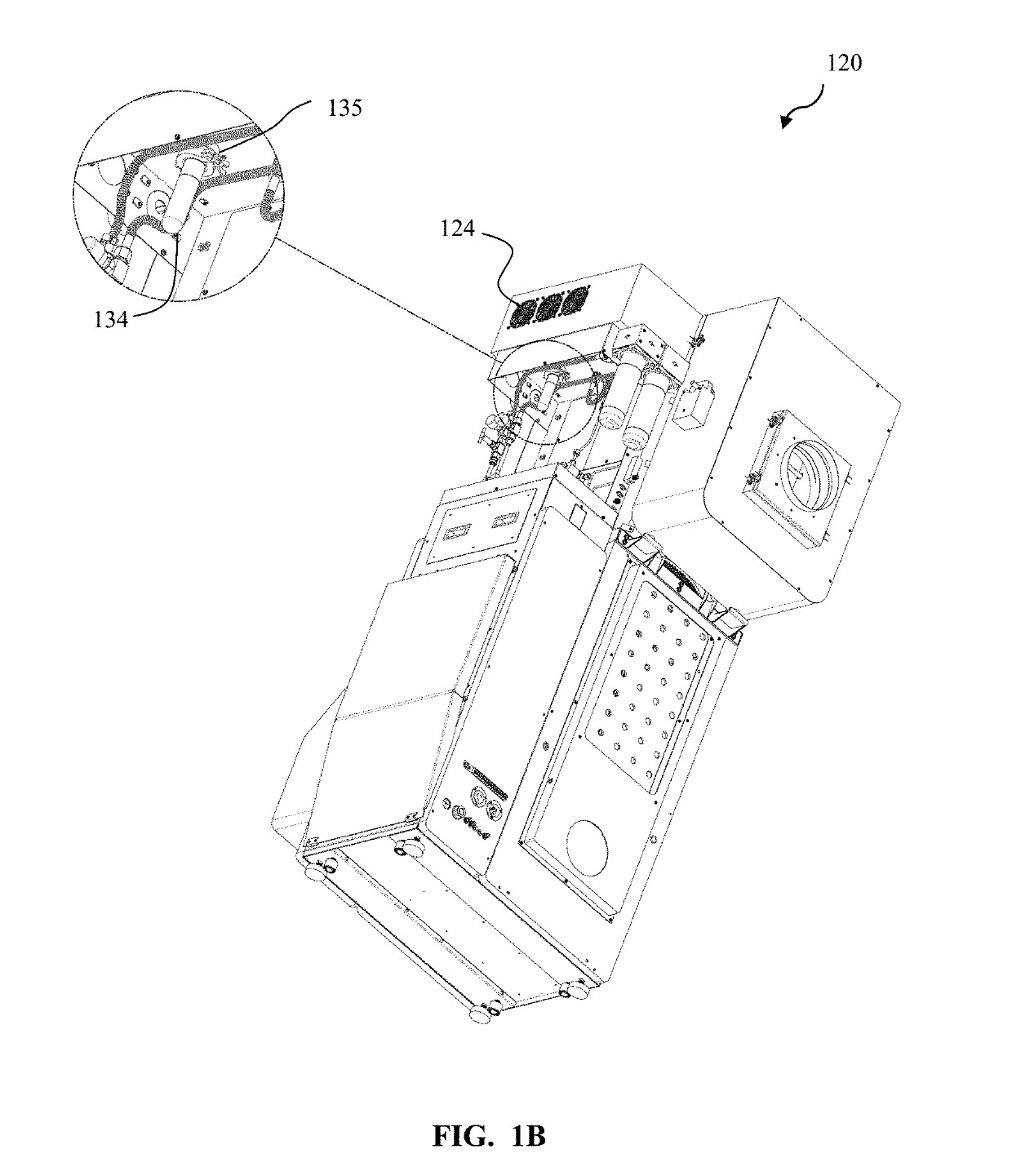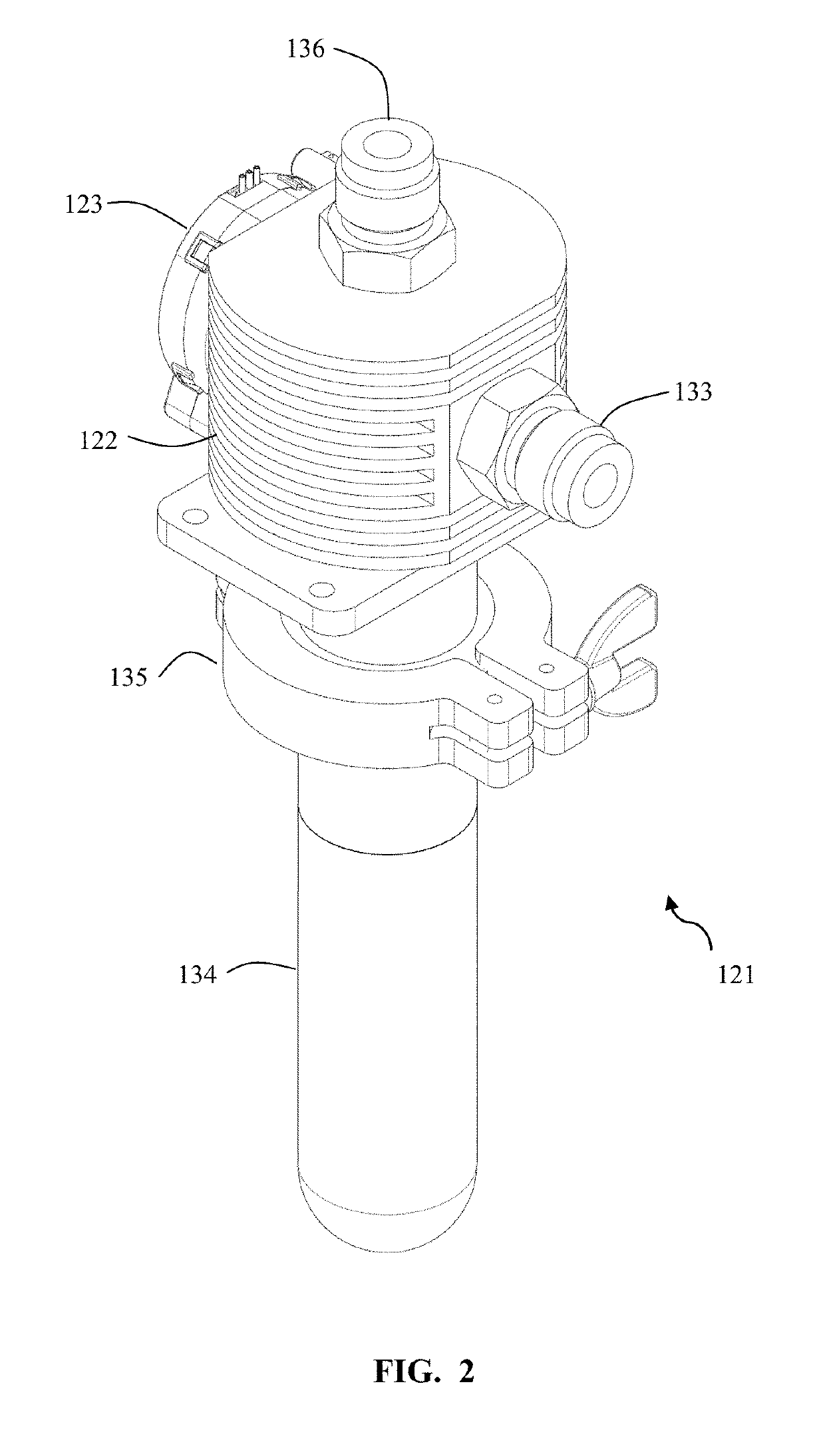Trap assembly and system for trapping polymer vapors in process oven vacuum systems
a vacuum system and polymer vapor technology, applied in the field of vacuum systems, can solve the problems of continuous shrinkage of feature sizes, shrinkage of integrated circuit design rules that has simultaneously reduced wiring pitch, and signal propagation delay in the interconnection an appreciable fraction of the total cycle tim
- Summary
- Abstract
- Description
- Claims
- Application Information
AI Technical Summary
Benefits of technology
Problems solved by technology
Method used
Image
Examples
second embodiment
[0046]Referring to the cross-sectional view of the trap assembly 221 seen in FIG. 16, the chamber exhaust flow 270 enters the trap assembly via the trap inlet 233. The chamber exhaust flow may be routed to the trap inlet 233 via heated lines adapted to minimize or prevent condensation of vapors prior to their arrival at the trap assembly. The chamber exhaust flow 270 enters the condensation chamber within the condensing body. The inside surface 251 of the condensing body, which is also the outside perimeter of the condensation chamber, is cooled as described above. In this embodiment, the chamber exhaust flow 270 may enter the condensing body 222 and is deflected around the flow deflector 240. The chamber exhaust flow 270 flows along the interior surface 251 as it routes around the flow deflector 240. The flow may then enter the orifice 243 into the center portion of the flow deflector and up to the trap outlet 236. The cooled inside surface 251 leads to condensation of the vapors w...
first embodiment
[0047]FIG. 19 illustrates a flow deflector 240 according to the present invention. The flow deflector 240 is cylindrical and has a principal axis which is vertical. A mounting flange 244 allows for coupling to the condenser body. An orifice 243 is seen along the side of the flow deflector 240. An opening 242 is seen at the bottom of the cylindrical flow deflector 240.
[0048]FIG. 20 illustrates a flow deflector 250 according to a second embodiment of the present invention. The flow deflector 250 is cylindrical and has a principal axis which is vertical. A mounting flange 254 allows for coupling to the condenser body. An orifice 253 is seen along the side of the flow deflector 250. An opening 252 is seen at the bottom of the cylindrical flow deflector 250 below a narrowing portion 251. In some aspects, the flow deflector may be of a conical profile.
[0049]In some embodiments of the present invention, a drying process is carried out in a process chamber with low pressure / vacuum capabilit...
PUM
| Property | Measurement | Unit |
|---|---|---|
| pressure | aaaaa | aaaaa |
| thickness | aaaaa | aaaaa |
| pressure | aaaaa | aaaaa |
Abstract
Description
Claims
Application Information
 Login to View More
Login to View More - R&D
- Intellectual Property
- Life Sciences
- Materials
- Tech Scout
- Unparalleled Data Quality
- Higher Quality Content
- 60% Fewer Hallucinations
Browse by: Latest US Patents, China's latest patents, Technical Efficacy Thesaurus, Application Domain, Technology Topic, Popular Technical Reports.
© 2025 PatSnap. All rights reserved.Legal|Privacy policy|Modern Slavery Act Transparency Statement|Sitemap|About US| Contact US: help@patsnap.com



